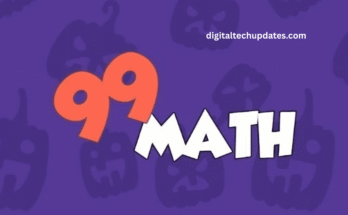Big Data refers to large amounts of data being generated almost every day. With the rise of internet connectivity, lots of data is being generated in every sector of the economy. Any action you take, ranging from which sites you browse to which traffic routes you follow – may be collected and used for various functions. These may range from understanding human behavior to bettering the convenience of their existence. But you probably already know this, preparing for your AWS Big Data Certification or for that big “Big Data” job interview you were looking forward to.
What Is A Big Data Interview Like?
A Big Data interview is different for the different organizations you apply to. It is necessary to understand the specific needs of the organization you are applying to. For example, in organizations that require knowledge of algorithmic frameworks to systematize data, one must be versed in the esoteric technicalities of that process. Nevertheless, the following questions and answers should aid you in any scenario.
Top Ten Big Data Interview Questions
- What are some examples of Big Data usage?
For Big Data organizations that have clients that use Big Data uniquely, it is best to have a broader idea of Big Data usage – pertaining outside the ambit of the specific organization you are applying to. Hence, it is useful to know the vast range of Big Data processes. This involves studying seemingly disparate examples – from Digital Humanities with databases that mostly specialize in finding patterns in Unstructured Data, to businesses that collect Structured Data from sales to maximize their profitability through future products.
- What is Big Data Strategy, and how would you improve it?
One may collect data from one or more sources, going on to store it and later processing it. This is what is commonly termed as “Big Data Strategy”. This varies according to the Big Data project one is working on, which varies to multiple degrees.
Let us take an example: If you were applying to a company that specialized in cloud storage, they would be involved more in the storing of data rather than its collection and processing.
As another example, let us look at a “Stream Processing” organization. The work here would involve understanding and processing a massive amount of data in real-time, to generate an output that is beneficial to a consumer.
- When analyzing data, would you prioritize the data or the model?
Certain companies – ranging in their functions from data collection to processing – prioritize either the quality of the data or the model to systematize it. Some have fixed data models and are hence focused on accurate data, while others shift their models to quantify and qualify an ever-changing pool of data that ranges across varying sources. Therefore, it is useful to look at company history and job description to prepare yourself for this question.
- How to differentiate between Unstructured Data and Structured Data, and convert the former to the latter?
Both Unstructured and Structured Data fall under the ambit of Big Data. However, Unstructured Data needs to be placed in a model to be led to a certain climax of analysis and conclusion. This converts it to Structured Data, which can be processed and analyzed. Both modes of data may be stored, but the structuring of data usually makes for more effective utilization of storage space, be it in a physical location and/or cloud space.
- How would you distinguish between bad or dirty structured data from good or clean Structured Data?
Good and/or clean Structured Data maintains accuracy and consistency between its different data points. For example, “January 10, 2021” could be stored in the common U.S. format of “01/10/2021” or as “10/01/2021” in the dd/mm/yyyy format. If the date field format varies in the data set, it will lead to serious errors during downstream data processing in addition to being incorrect.
Structured data may be consistent in how it prevents needless duplication of differing data elements. It should also show a sense of completeness in how all needed elements of the Structured Data set should be present in its individual data points.
- What exactly is Data Preparation, and why is it important?
Data preparation is a process that ensures that the data is ready for further analysis. It involves collecting, consolidating, and “cleaning up” the big data. Data preparation enhances the accuracy of Big Data, which in turn would lead to accurate insights and future predictions from once-disparate Unstructured Data.
- What are the most-utilized platforms that use Big Data?
Various organizations utilize different Big Data platforms, ranging from Open Source to ones that require an exclusive license. While you may have utilized the functions of popular open-source Big Data resources like Hadoop and HPCC, it is necessary to see which specific resources are utilized by the company you are applying to and versing yourself in it. Furthermore, it is useful to understand the frameworks of various such services – whether you are regularly using them or not.
- What is the functionality of one such resource, namely Hadoop?
Hadoop is the most prominent example of an open-source resource that specializes in the storage and processing of Big Data. It provides a framework that aids in storing massive chunks of Unstructured Data with ease, and aids in processing it in unique ways.
- How would you formulate new processes that utilize Big Data?
While it is more likely the case that you are applying to organizations that use tried-and-tested models of Big Data, it is a vastly necessary skill to formulate new processes of utilizing Big Data – in which you are the pioneer.
- How does one ensure anonymizing of Big Data?
A massive problem of Big Data Acquisition is the prevention of data theft. To properly anonymize such data, the data may be led to undergo a mode of “Stream Processing” — where it is changed and structured to the specific needs of the project before being stored in servers and/or clouds. This is an ideal time to distance the content of the data from the human source of it.
Conclusion
Working on Big Data is like partaking on the human frontier — a new sphere of knowledge that may better our lives in far more ways than one. Here’s hoping you ace your big Big Data interview!




